
MODEC Contracts Jumbo Offshore for FPSO Errea Wittu Job
capacity of 540 million cubic feet per day, and water injection capacity of 350,000 barrels per day..MODEC Group was authorized to proceed with the engineering, procurement, construction and installation (EPCI) scope for the FPSO in May 2023, following a final investment decision on the Uaru project by ExxonMobil Guyana and its co-venturers.Exxon Mobil Approves $12.7B Uaru Offshore Oil Project in GuyanaMODEC Confirms Its First FPSO Order in GuyanaThe FPSO mooring system will be supplied by SOFEC, a MODEC Group company, and consists of a total of 19 mooring legs.Jumbo Offshore will be using its
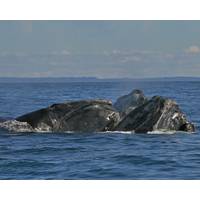
Threat to Whales Complicates US Research into Seaweed for Biofuel
2.7 quadrillion BTUs of biofuel, roughly 10% of U.S. annual energy demand in transportation.For now, kelp can't beat corn's low cost. U.S. seaweed production costs, running at $300 to $1,000 per metric ton, need to drop to around $80 to compete with corn, Freeman said.Big oil companies including Exxon had for years studied the possibilities of making biofuel from microalgae, a plant-like organism that's invisible to the naked eye, but eventually backed out over concerns about cost and scalability."Algae still has real promise as a renewable source of fuel, but it has not yet reached a
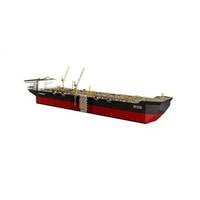
ExxonMobil Taps TechnipFMC for Uaru Subsea Production System
TechnipFMC announced Tuesday it has been awarded a contract by ExxonMobil affiliate Esso Exploration and Production Guyana Limited to supply the subsea production system for the Uaru project offshore Guyana.The award covers 44 subsea trees and associated tooling, as well as 12 manifolds and associated controls and tie-in equipment. TechnipFMC said it will provide project management, engineering and manufacturing to deliver the overall subsea production system.TechnipFMC did not give a dollar figure for the contract, but described it as "large", in the range of $500 million to $1 billion.
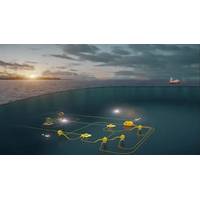
TechnipFMC Gets Notice to Proceed, Wins More Work at Exxon's Yellowtail Project Offshore Guyana
Oilfield services giant TechnipFMC has secured an additional contract and received notice to proceed from ExxonMobil for its Yellowtail development in the Stabroek Block offshore Guyana.The newly announced, "significant" flexibles contract covers six risers that are qualified for high pressure and high temperature. For TechnipFMC, a “significant” contract is between $75 million and $250 million.The company has also been given full notice to proceed with the previously announced contract for the subsea production system (SPS), following ExxonMobil’s final investment
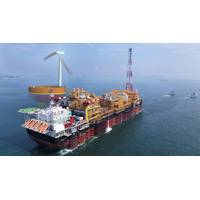
Waterotor Unveils 20MW 'Big Cajun' System Aimed at Decarbonizing Offshore Oil Operations
, reaching speeds of more than five miles per hour (2.5 meters per second) and containing as much as 100 times the combined flow of the world’s rivers," the company said.Guyana is becoming one of the world's major deepwater oil provinces, on the back of multiple oil discoveries made by Exxon, and will see multiple FPSOs deployed in the giant Stabroek block in the years to come. Suriname is looking to become the next big thing in offshore oil following a string of oil finds by TotalEnergies and Apache.The Big Cajun renders shared by the company show a giant floater with a wind turbine
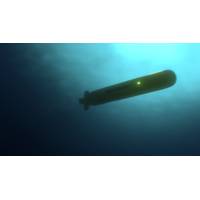
How AUVS Can Spot Oil Plumes After an Ocean Spill
ocean after a spill. This means that clean-up operations may miss large portions of the oil, which can have severe consequences on marine habitats, fish and birds.Even a small amount of oil can be fatal to a bird. Oil-coated feathers make flying impossible and damages their body insulation. During the Exxon Valdez spill off the coast of Alaska in 1989, 250,000 seabirds were killed. The Deepwater Horizon spill killed 82,000 birds from 102 species, 6,165 sea turtles, 25,900 marine mammals and an incalculable number of fish.If we can find these plumes and clean them up, we might be able to save some of

ExxonMobil Hires Oceaneering for Offshore Surveys in Guyana
ExxonMobil has hired offshore services firm Oceaneering for the provision of two surveys offshore Guyana, where Exxon has over the past few years discovered around nine billion barrels of oil.Oceaneering will carry out a towed and autonomous underwater vehicle (AUV) geophysical survey and a shallow geotechnical survey off the coast of Guyana.Oceaneering will use the DP-2 Cape Davis, equipped with the 3,000 m-rated OS-VI AUV, towed geophysical sensors, and geotechnical sampling and testing equipment.The surveys are scheduled to begin in Q3 2021. In addition to the geophysical and geotechnical survey

David Kennedy Designated as Chair of US Arctic Research Commission
; matrix and collaborative program management; and a suite of coastal issues focused on development, climate change, energy, and coastal resiliency.He played a significant role in the federal government’s response to most of the major oil pollution events of the past three decades, including the Exxon Valdez and New Carissa oil spills, and international events such as the IXTOC I oil-well blowout, Galápagos Island, and Persian Gulf War spills.In 2010, he served as NOAA’s commander for the agency’s response to the Deep Water Horizon/BP oil spill, including the agency’s
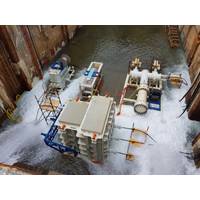
Putting Power on the Seabed: Edging towards a Subsea Powerhouse
power. Integrating batteries and offshore wind would need subsea control systems, and this is something ABB is also working on.Photos from ABBSiemens close to qualifiedAnother JIP was run by Siemens Energy to deliver 6 MVA of power over 200km and distribute it locally, is ongoing. Supported by Chevron, Exxon, Equinor, and Eni Norge (now Vår Energi), Siemens Energy is adding a VSD (now at TRL4), switchgear and controls to its already qualified transformer, all for 3,000 m water depth.Siemens’ entire subsea power distribution grid, including VSDs, transformer, switchgear, and control, all in



 February 2024
February 2024





